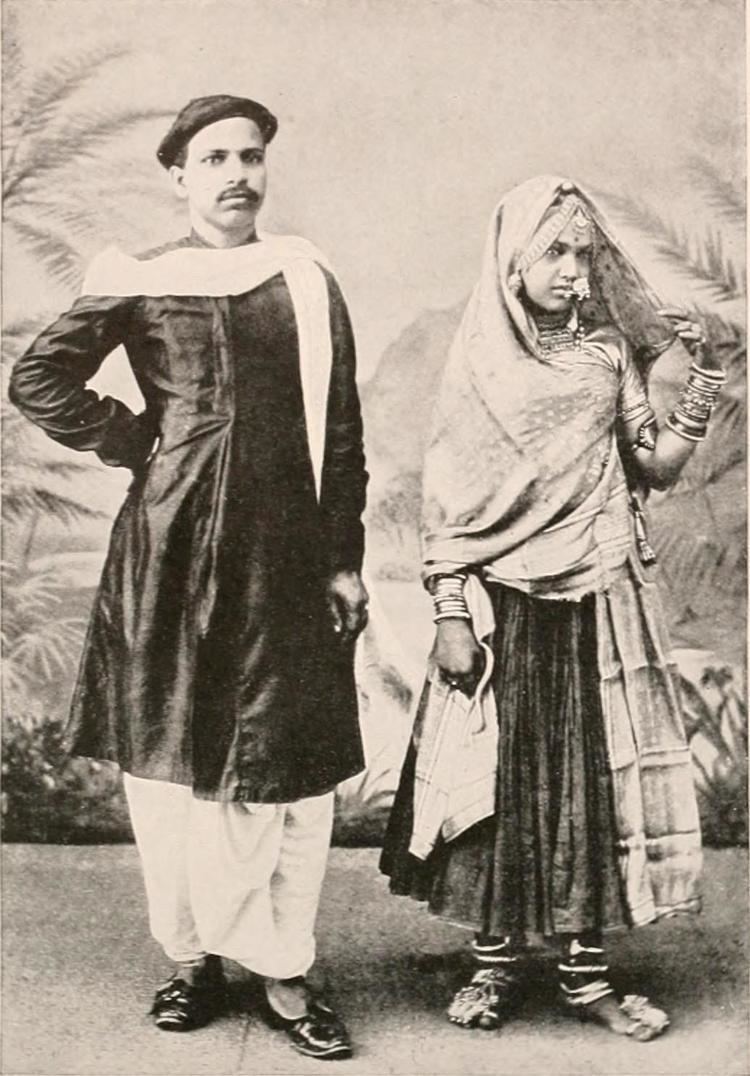 | ||
Nepal Terai region and Kathmandu Valley | ||
The Marwari or Marwadi are a South Asian ethnic group that originate from the Rajasthan region in India. Their language, also called Marwari, is closely related to Rajasthani, which is part of the Western Zone of Indo-Aryan languages, and often subsumed under Rajasthani.
Contents
Etymology
The term Marwari once referred to the area encompassed by the former princely state of Marwar, also called the Jodhpur region of southwest Rajasthan in India. The word Marwar is considered to be derived from Sanskrit word Maruwat, the meaning of maru being 'desert'. Others believe that word Marwar is made up of Mar from alternate name of Jaisalmer and last part war of Mewar. It has evolved to be a designation for the Rajasthani people in general but it is used particularly with reference to certain jātis that fall within the Bania ethnic category. Those communities, whose traditional occupation has been as traders, comprise the Barnwals, Agarwals, Khandelwals, Maheshwaris and Oswals.
Dwijendra Tripathi believes that the term Marwari was probably used by the traders only when they were outside their home region; that is, by the diaspora.
History
Marwari traders have historically been migratory in habit. The possible causes of this trait include the proximity of their homeland to the major Ganges-Yamuna trade route; movement to escape famine; and the encouragement given to them to settle in kingdoms ruled by Rajputs who saw advantages in having their skills. Their abilities were valued by Rajput rulers because, in the period prior to the influx of the British to northern India, the Rajput kingdoms were often warring against each other. Marwari traders often acted as connecting dots and intermediaries amongst them, often providing them with money and goods.
Business history
Medha Kudaisya has said that the Marwaris:
... made the transition from being niche players in trading to becoming industrial conglomerates ... From being brokers and bankers, the Marwaris went on to break the British monopoly over the jute industry after World War I; they then moved into other industrial sectors, such as cotton and sugar, and set up diversified conglomerates. By the 1950s, the Marwaris dominated the India private industry scenario, emerging as the establishers of its most prominent business houses.
Linguistic history
Marwari, or Marrubhasha, as it is referred to by Marwaris, is the traditional, historical, language of the Marwari ethnicity. The Marwari language is closely related to the Rajasthani language. The latter evolved from the Old Gujarati (also called Old Western Rajasthani, Gujjar Bhakha or Maru-Gurjar), language spoken by the people in Gujarat and Rajasthan.
Food
The Marwari cuisine is mainly vegetarian, yet offers a diversity of different dishes. The locally famed Dal-Baati-Churma is a popular dish among Marwari people. Post millennium age Marwaris have started having meat but in smaller percentage. One thing common for baatis, irrespective of their cooking technique, is that they are always served dipped in ghee, accompanied with panchmel, or panch kutti dal and churma. The dal is cooked with ghee, the masalas in the dal are fried in ghee, and more ghee is mixed into the dal before serving.
